
Xplor reconnects kids to nature and helps them find adventure in their own backyard. Free to residents of Missouri.


































Stay in Touch with MDC news, newsletters, events, and manage your subscription

Xplor reconnects kids to nature and helps them find adventure in their own backyard. Free to residents of Missouri.

A monthly publication about conservation in Missouri. Started in 1938, the printed magazine is free to residents of Missouri.
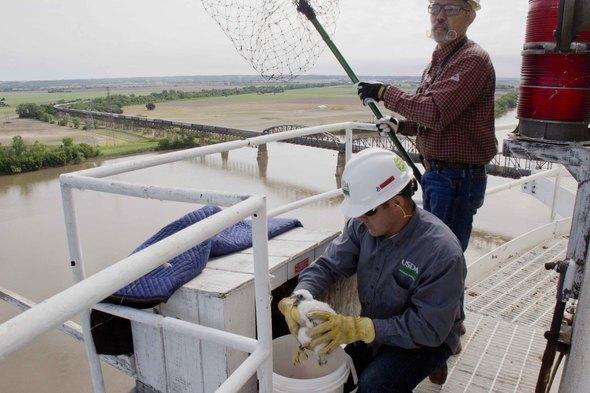
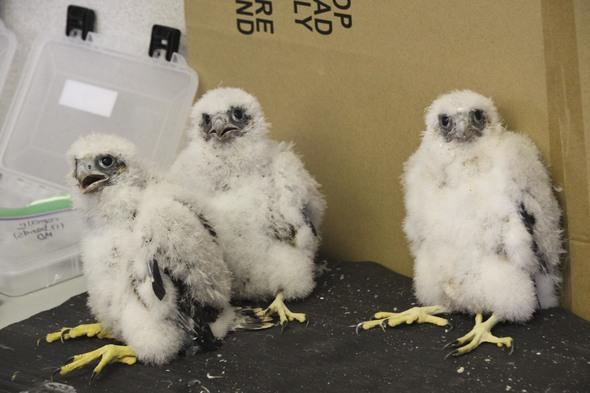
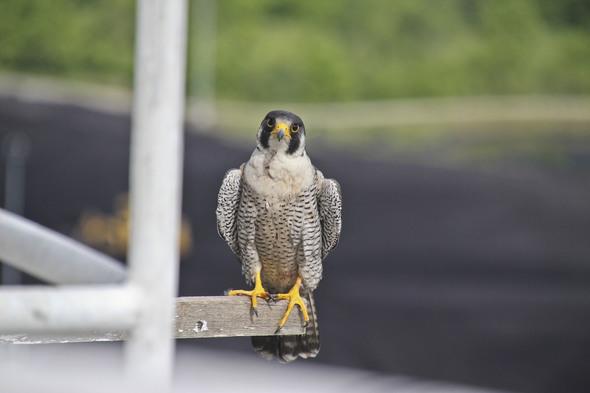
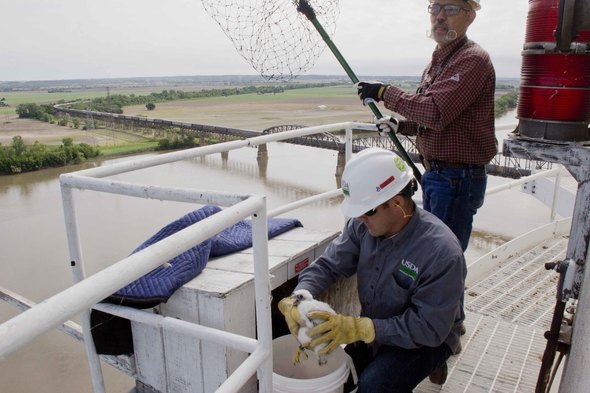
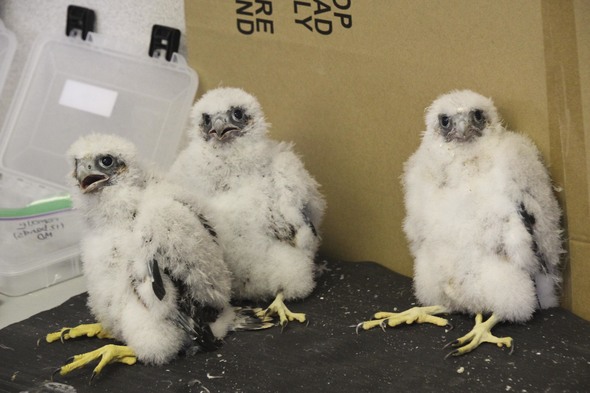

Kansas City, Mo. – In May, a young peregrine falcon is a fluffy, fragile white bird. It's protection is being in a nest hundreds of feet in the air away from predators. Yet by summer’s end, the falcons will be birds of prey, soaring like their fast-flying parents and dive bombing small birds for food. Missouri Department of Conservation (MDC) biologists and peregrine restoration partners track their travels or fates as birders spot leg bands on falcons.
MDC biologists and partners on May 18 removed four young falcons from their nest high on the smokestack at KCP&L’s Sibley Power Plant in eastern Jackson County. Leg bands were affixed and the birds were returned to their nests. MDC Is monitoring five active falcon nests this spring in the Kansas City metro area. The other four are at Commerce Tower in downtown Kansas City, American Century Investments building at the Country Club Plaza, and KCP&L’s Iatan and Hawthorne power plants near the Missouri River.
Another falcon pair is also in the second season of nest tending at Thomas Hill Reservoir in north central Missouri. That nest is on a power plant smokestack owned by Associated Electric Cooperative Inc. of Springfield. The nest was empty for several years until a pair of falcons dispersing to new territory claimed it.
“We’re doing very well,” said Joe DeBold, MDC urban wildlife biologist, adding that this spring could see the most chicks ever hatched in western Missouri. “We’re expecting more natural dispersal as we get more nest boxes up.”
Putting nests on skyscrapers and power plant smokestacks are an assist for falcons by conservation. Originally, they nested on cliffs. Their numbers plummeted after World War II as DDT use interfered with reproduction. Falcons in urban or industrial areas do people a favor by feeding on nuisance birds such as pigeons. Peregrines are listed as an endangered species in Missouri.
Falcon numbers are now growing and they’re doing some surprising mingling. DeBold received a report that leg bands on the falcon parents at the American Century Investments nest show the birds vary in origin and age. The male was banded as a juvenile in 2015 at the Hawthorne Power Plant, while the female is 14 years old and originally came from Minnesota.
Two live web cameras are aimed into peregrine falcon nests in the Kansas City area. The young birds can be seen moving around the nest, napping and eating. They grow quickly as days pass, too.
To watch the falcon nest at the Iatan plant, visit https://livestream.com/accounts/8268653/events/4871157?origin=stream_live&mixpanel_id=145a9df00a3194-0c861f848b4eef8-5f056213-1aeaa0-145a9df00a412d&acc_id=8267274&medium=email.
For viewing the Plaza falcons, visit http://www.ustream.tv/channel/kansas-city-plaza-falcon-cam.